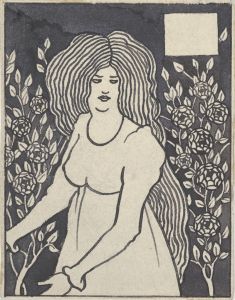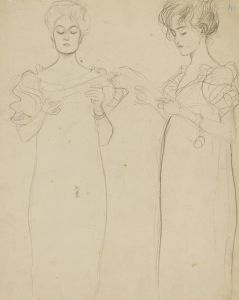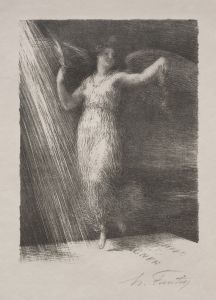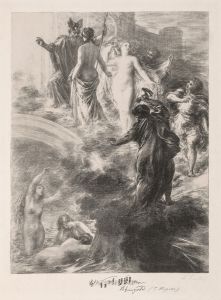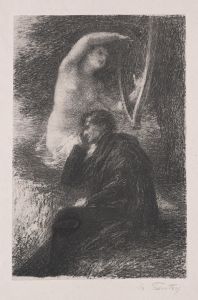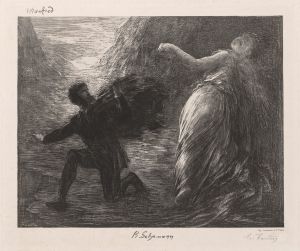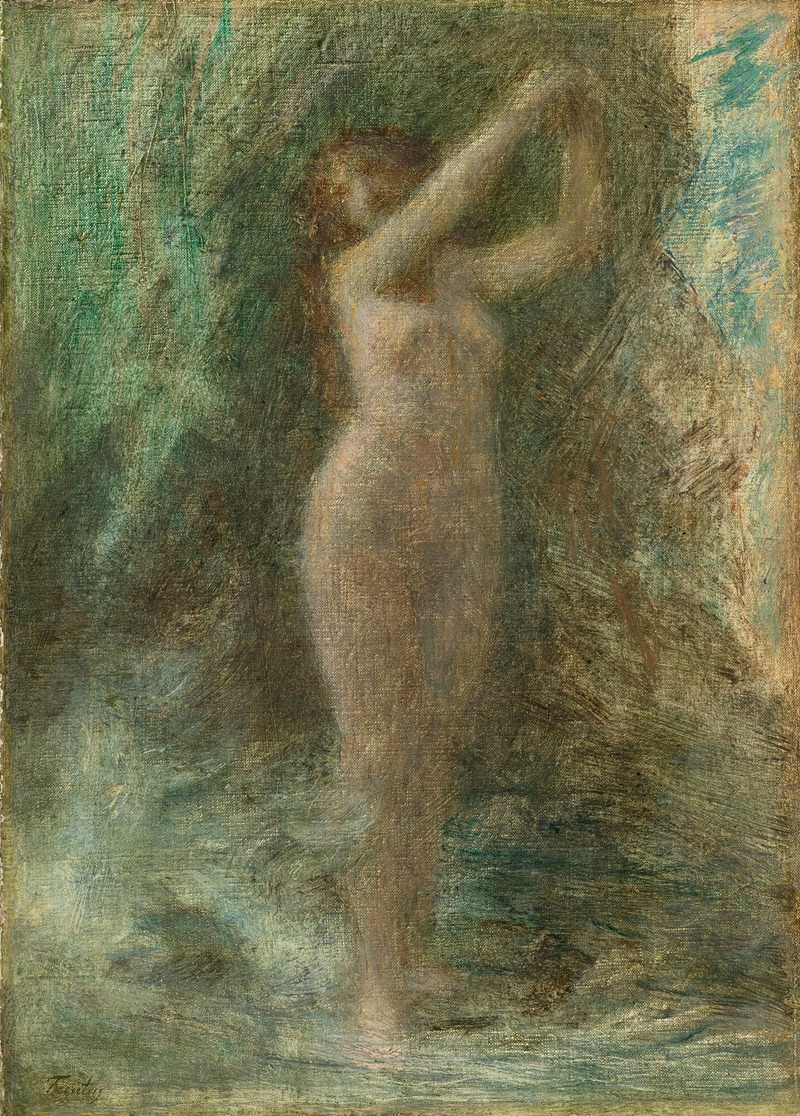
Andromède
A hand-painted replica of Henri Fantin-Latour’s masterpiece Andromède, meticulously crafted by professional artists to capture the true essence of the original. Each piece is created with museum-quality canvas and rare mineral pigments, carefully painted by experienced artists with delicate brushstrokes and rich, layered colors to perfectly recreate the texture of the original artwork. Unlike machine-printed reproductions, this hand-painted version brings the painting to life, infused with the artist’s emotions and skill in every stroke. Whether for personal collection or home decoration, it instantly elevates the artistic atmosphere of any space.
Henri Fantin-Latour, a French painter renowned for his still lifes and portraits, created the painting Andromède in 1879. This work is an interpretation of the mythological figure Andromeda, a character from Greek mythology. The story of Andromeda, as recounted in classical sources, tells of her being chained to a rock as a sacrifice to a sea monster, only to be rescued by the hero Perseus. Fantin-Latour’s depiction of Andromeda reflects his interest in mythological and allegorical themes, which he explored in several of his works during the latter part of his career.
Andromède is an oil painting that showcases Fantin-Latour's characteristic style, blending realism with a dreamlike, almost ethereal quality. The composition focuses on the figure of Andromeda, portrayed as a nude female figure, emphasizing her vulnerability and beauty. She is depicted against a dramatic, rocky seascape, which serves as a backdrop to her plight. The painting captures a moment of stillness and introspection, rather than the action-packed scenes often associated with the myth. This approach aligns with Fantin-Latour's preference for creating works that evoke a sense of quiet contemplation.
Fantin-Latour was heavily influenced by the Romantic movement, and this influence is evident in Andromède. The painting's emotional depth and focus on the sublime aspects of nature reflect Romantic ideals. Additionally, the soft, diffused lighting and delicate rendering of Andromeda's figure highlight Fantin-Latour's technical skill and his ability to convey both physical and emotional nuance.
While Fantin-Latour is best known for his floral still lifes and group portraits of his contemporaries, such as Homage to Delacroix (1864), his mythological works, including Andromède, demonstrate his versatility and his engagement with broader artistic traditions. These works also reveal his interest in exploring themes of beauty, vulnerability, and the human condition through the lens of classical mythology.
Andromède is housed in the Musée des Beaux-Arts in Lyon, France. It remains an important example of Fantin-Latour's mythological oeuvre and a testament to his ability to merge classical themes with his unique artistic vision. The painting continues to be appreciated for its technical mastery and its evocative portrayal of a timeless mythological narrative.






